The Octa-augmented Runcinated Tesseract
The octa-augmented runcinated tesseract is a CRF polychoron. It has 72 vertices, 256 edges, 256 polygons (160 triangles, 96 squares), and 72 cells (16 tetrahedra, 32 triangular prisms, and 24 elongated square bipyramids (J15)).
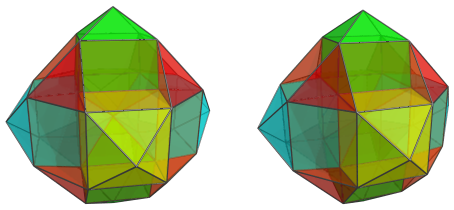
It may be constructed by augmenting the runcinated tesseract with 8 cubical pyramids. It can also be obtained via a modified partial Stott expansion of the 24-cell, regarded as an octa-augmented tesseract (rather than according to full 24-cell symmetry).
Structure
We shall explore the structure of the octa-augmented runcinated tesseract by means of its parallel projections into 3D, centered on the vertex where 6 elongated square bipyramid (J15) cells meet.
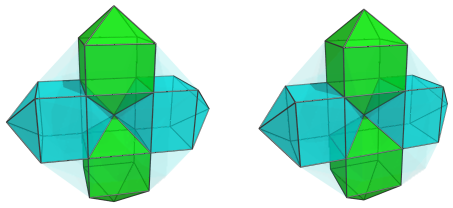
The above image shows four of the J15 cells surrounding the nearest vertex to the 4D viewpoint. For clarity, we have left out the other two J15 cells and the rest of the polytope.
These cells are somewhat foreshortened, because they are seen at a 45° angle to the 4D viewpoint. The following image shows the other two J15 cells that also meet at this vertex:
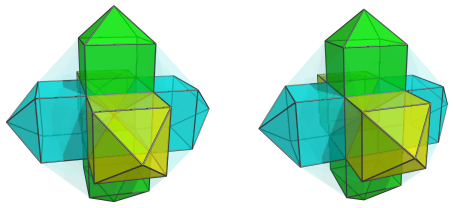
Straddling the square faces of these J15 cells are 12 triangular prisms:
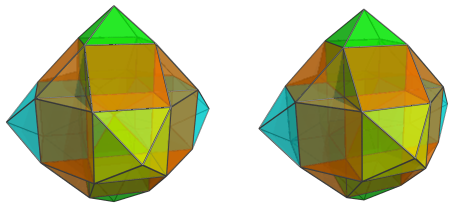
The 8 remaining gaps are filled by 8 tetrahedra:
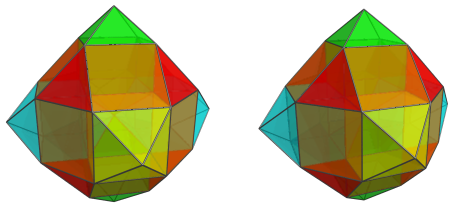
These are all the cells that lie on the near side of the polychoron.
Following this, we come to the equator
: the cells that lie on the
projection envelope.
There are twelve J15 cells that lie on the equator, as shown next:
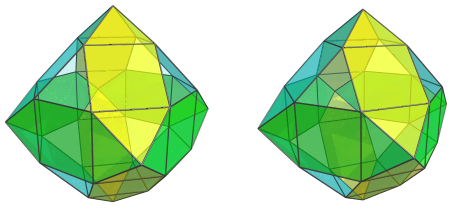
For clarity, we have omitted the cells we saw earlier.
These J15's have been foreshortened into flat hexagons, because they lie at a 90° angle to the 4D viewpoint. In 4D, of course, they are identical to the other J15 cells we have seen.
The 8 remaining gaps in the equator are where 8 more triangular prisms fit:
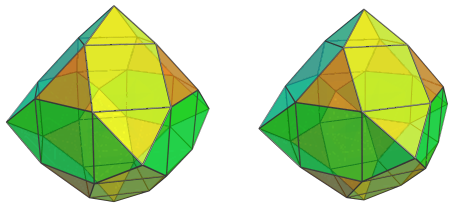
These triangular prisms have been foreshortened into triangles, because they lie at a 90° angle to the 4D viewpoint. In 4D, they are perfectly uniform triangular prisms.
These are all the cells that lie on the equator of the polytope. Past this point, we come to the far side of the polytope, where the arrangement of cells mirror that of the near side.
The following table summarizes the cell counts of the polychoron:
| Region | |||
|---|---|---|---|
| Near side | 6 | 8 | 12 |
| Equator | 12 | 0 | 8 |
| Far side | 6 | 8 | 12 |
| Grand total | 24 | 16 | 32 |
| 72 cells | |||
Coordinates
The Cartesian coordinates of the octa-augmented runcinated tesseract, centered on the origin and with edge length 2, are all permutations of coordinates and changes of sign of:
- (1, 1, 1, 1+√2)
- (0, 0, 0, 2+√2)




